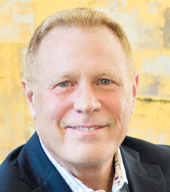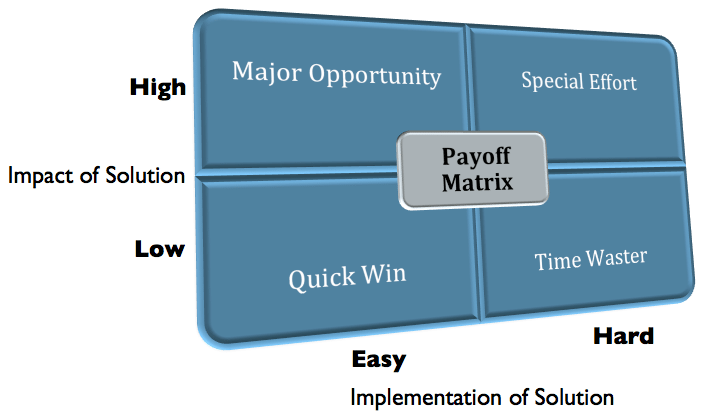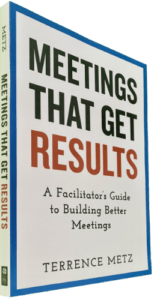Quick Wins are found in the Payoff Matrix shown in the “two by two” below provides the classic means of prioritizing your options. Using return (i.e., Impact of the Solution) and investment (i.e., Cost of Implementation, typically time or money) as the criteria dimensions, it sorts your options into one of four categories:
- Quick Win (aka, Quick Hit)
- Major Opportunity
- Special Effort
- Time Waster
Alternative Payoff Matrix
Perhaps a more engaging and stimulating way to frame the options with a Payoff Matrix substitutes the Probability of Success for the investment or cost dimension. If so, the alternative Payoff Matrix would include the following labels:
- Quick Win
- Tried and True
- Wild and Crazy
- Hail Mary Pass
Method for Building a Payoff Matrix
Once you have built your options, code them onto small Post-It® notes. Alpha coding (i.e., A, B, C, etc.) is preferred to numeric coding (i.e., 1, 2, 3, etc.) because it denies subtle bias about relative importance that is implied when using numbers. Consider iconic coding as an alternative to strip away all possible bias (i.e., ✚, ♢, ✇, etc.).
Place your matrix criteria on a large whiteboard. Begin by facilitating from the zero point, or middle of the matrix. Then work one dimension (criteria) at a time, asking if it is more or less than other options previously posted. Complete when the group can support the entire array.
Alternative
Break your team into three groups and have each group complete their own coding, probably on a large sheet (i.e., 50cm * 75cm), and bring all three Payoff Matrices to the front. Create a fourth and final Payoff Matrix by merging the three, facilitating discussion about the differences until the group can support the final array.
Next Steps
Complete your prioritization effort with two more steps: assign roles and responsibilities for further development and conduct a Guardian of Change to agree on what participants will tell others after your meeting has concluded.
______
Don’t ruin your career by hosting bad meetings. Sign up for a workshop or send this to someone who should. MGRUSH workshops focus on meeting design and practice. Each person practices tools, methods, and activities every day during the week. Therefore, while some call this immersion, we call it the road to building high-value facilitation skills.
Our workshops also provide a superb way to earn up to 40 SEUs from the Scrum Alliance, 40 CDUs from IIBA, 40 Continuous Learning Points (CLPs) based on Federal Acquisition Certification Continuous Professional Learning Requirements using Training and Education activities, 40 Professional Development Units (PDUs) from SAVE International, as well as 4.0 CEUs for other professions. (See workshop and Reference Manual descriptions for details.)
Want a free 10-minute break timer? Sign up for our once-monthly newsletter HERE and receive a timer along with four other of our favorite facilitation tools, free.
Related video

Terrence Metz, president of MG RUSH Facilitation Training, was just 22-years-old and working as a Sales Engineer at Honeywell when he recognized a widespread problem—most meetings were ineffective and poorly led, wasting both time and company resources. However, he also observed meetings that worked. What set them apart? A well-prepared leader who structured the session to ensure participants contributed meaningfully and achieved clear outcomes.
Throughout his career, Metz, who earned an MBA from Kellogg (Northwestern University) experienced and also trained in various facilitation techniques. In 2004, he purchased MG RUSH where he shifted his focus toward improving established meeting designs and building a curriculum that would teach others how to lead, facilitate, and structure meetings that drive results. His expertise in training world-class facilitators led to the 2020 publication of Meetings That Get Results: A Guide to Building Better Meetings, a comprehensive resource on effectively building consensus.
Grounded in the principle that “nobody is smarter than everybody,” the book details the why, what, and how of building consensus when making decisions, planning, and solving problems. Along with a Participant’s Guide and supplemental workshops, it supports learning from foundational awareness to professional certification.
Metz’s first book, Change or Die: A Business Process Improvement Manual, tackled the challenges of process optimization. His upcoming book, Catalyst: Facilitating Innovation, focuses on meetings and workshops that don’t simply end when time runs out but conclude with actionable next steps and clear assignments—ensuring progress beyond discussions and ideas.






Reblogged this on Gr8fullsoul.